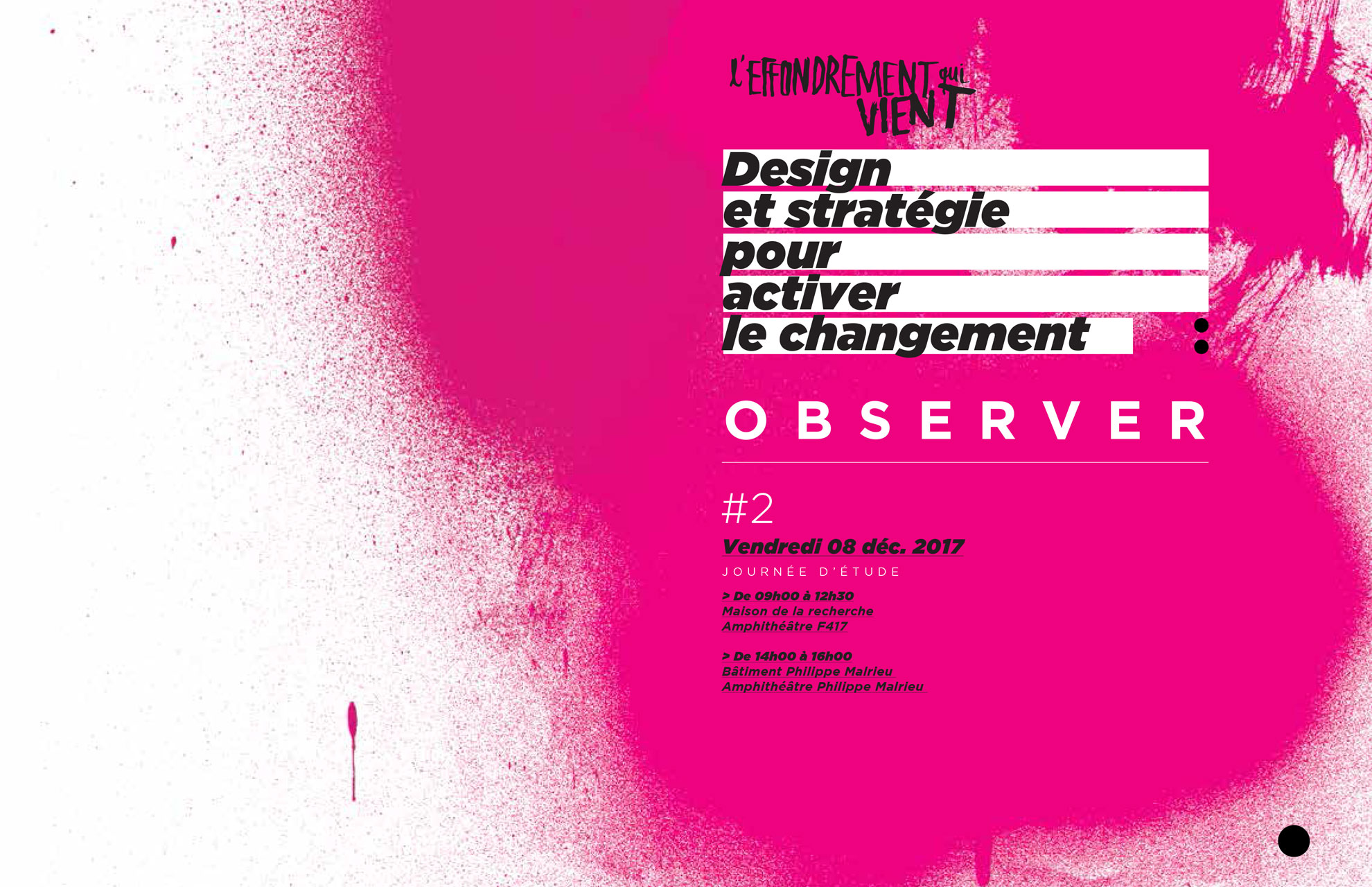
"The coming collapse #2. : observation as a lever", study day organised under the responsibility of Fabienne Denoual by the laboratory Lettres, Langages et Arts-Création, Recherche, Émergence, en Arts, Textes, Images, Spectacles (LLA-CRÉATIS), Université Toulouse Jean-Jaurès.
Communiqué de presse
Text of the presentation of the study day: "A first morning of study, which took place in March 2017, allowed us to carry out an initial assessment of the levers of change in the face of the unsustainability of the industrial way of life that currently prevails. Faced with this increasingly palpable fact, many initiatives are emerging.
They promote new modes of production and organisation, new ways of living and inhabiting the world, thereby challenging the designer and his practice. How can this project practice, which creates a wide typology of devices* often with a commercial or industrial vocation, be reoriented to contribute to the transition initiatives already underway, to accompany and facilitate them, in order to bring about a sustainable transformation of our environments and modes of life and production? Although awareness of the finitude and unsustainability of the current way of life is spreading, a large number of people continue to turn a deaf ear, resisting the idea of giving up the material superfluities that are responsible for the situation in which the world finds itself. How can we transform the current system when the main media and the majority of politicians believe in the importance of stimulating consumption in order to revive economic growth, which is nevertheless leading us ever faster towards collapse (Jean-Marc Jancovici, Pablo Servigne, Raphaël Stevens).
How can we deviate from this trajectory and rebuild a sensible and desirable perspective of life together? Is this even possible? To date, we find ourselves somewhere between two organisational models: one that is still alive and kicking and continues to squander resources, and another that is more frugal and challenges the former in a fundamental way, but which has great difficulty in coming into being, held back by the dynamic eco-techno-symbolic relationship that is so firmly entrenched.
It is undoubtedly by engaging actions of various kinds: more and less radical, more and less direct, the least direct involving a conversion of the model from within.
Although radical actions are necessary, other, more indirect actions seem just as indispensable, making it possible to reach a wider public that is less inclined to accept radical modes of action because it still finds an interest in maintaining the current system. It is these complementary paths aimed at transforming the system from within that we will be examining today. These paths seek to gradually bring people to change their habits, by converting, for example, the supply of local supply circuits, which promote sustainable, peasant agriculture, sparing of petrochemicals both for crops and for the transport of produce. We will see how this is embodied, in particular through collective cuisine supplied locally, with quality products that are more interesting in terms of taste (school canteens, administrative canteens).
It is at the very heart of the system and the environments it generates that the more economical and resilient lifestyles of tomorrow will be invented. And in this perspective, one of the preliminary steps is to conduct a survey and observation. This is what the association Ultra Ordinaire intends to do in the town of Albi, which is carrying out a food self-sufficiency programme for the year 2020, in particular through a workshop to be held there from 11 to 15 December with students from the Master 1 Transdisciplinary Design Cultures and Territories.
Observing complexity (Edgar Morin) to understand and represent ourselves.
Observe identify.
Observing ****to give ourselves the means to reconnect with our power to act (Miguel Benasayag) and to participate, perhaps, in revitalising the relationship we have with our environment, our landscapes (Augustin Berque) and the more-than-human worlds (David Abram).
Result HERE
- spatial, volumetric, graphic, textile or interactive devices.
